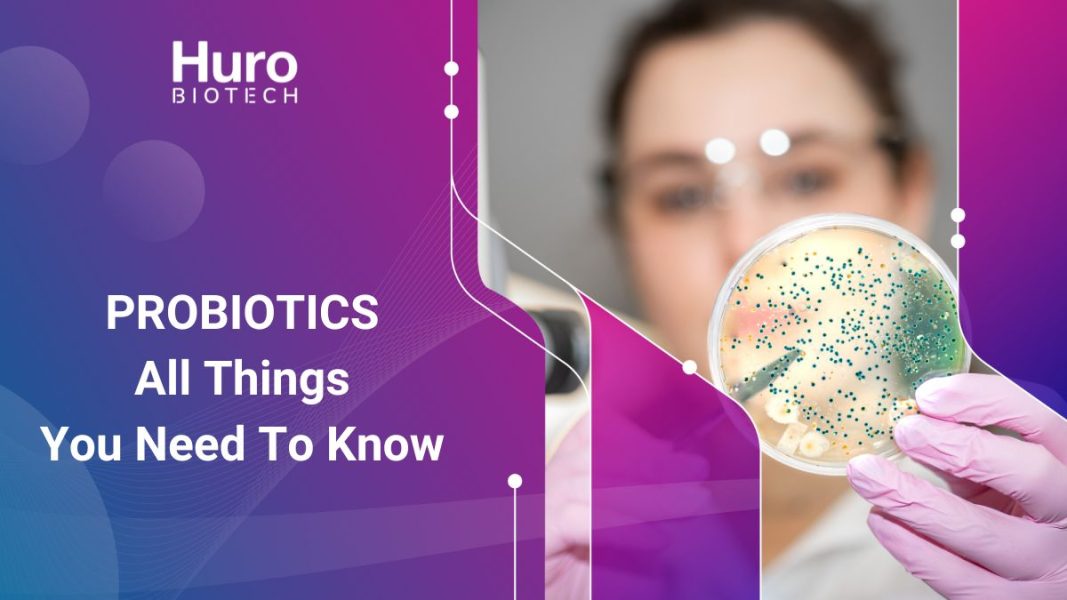Probiotics are transforming health and wellness, but what exactly are they? If you’re wondering probiotic what does it mean, probiotics are live microorganisms, often called “good bacteria,” that deliver health benefits when consumed in adequate amounts. At Huro Biotech, a leading biotechnology company in Southeast Asia, we’re dedicated to advancing gut health through research-backed sporebiotics, including strains like Bacillus subtilis HU58 and Bacillus indicus HU36. This guide dives deep into probiotic strains—specifically Bacillus subtilis HU58, Bacillus indicus HU36, Bacillus clausii, Bacillus coagulans, and Bacillus subtilis DSM 32444—covering their types, categorization, benefits, and formats. Ready to explore the science behind these powerful microbes? Let’s get started!
Understanding Probiotics
Probiotic What Does It Mean?
Probiotics are live bacteria or yeasts that support a healthy gut microbiome—the community of microorganisms in your intestines. Probiotics can enhance digestion, boost immunity, and reduce inflammation (NCCIH, n.d.). Bacillus strains, such as Bacillus subtilis HU58, Bacillus indicus HU36, Bacillus clausii, Bacillus coagulans, and Bacillus subtilis DSM 32444, are spore-formers, meaning they form protective shells to survive harsh conditions like stomach acid or heat. This resilience makes them ideal for supplements and select fermented foods like natto. Probiotic what does it mean in practical terms? It means introducing robust microbes to support nutrient absorption, combat harmful bacteria, and promote wellness. At Huro Biotech, we harness these strains using advanced technology for sustainable health solutions.
Are All Probiotics the Same?
If you’ve asked, are all probiotics the same, the answer is no. Probiotics vary in strains, potency (measured in colony-forming units or CFUs), and delivery methods. Spore-forming Bacillus strains, like those studied by Huro Biotech, are particularly durable compared to non-spore-forming probiotics like Lactobacillus. For example, Bacillus subtilis HU58 and Bacillus coagulans withstand extreme conditions, ensuring they reach the gut alive (Hong et al., 2022). These differences are critical, as specific strains target specific health needs, which we’ll explore next.

Types and Strains of Probiotics
How Probiotics Are Categorized
Probiotics are categorized by their genus, species, and strain, which together form their scientific name. Understanding the parts of a probiotic name is key to identifying their function:
- Genus: The broadest category, such as Bacillus or Lactobacillus, indicating the group of bacteria or yeast.
- Species: A narrower category within the genus, like subtilis or coagulans, describing a specific type with shared traits.
- Strain: The most specific level, often a code like HU58 or SC208, identifying a unique isolate with distinct properties
For example, in Bacillus subtilis HU58:
- Bacillus is the genus.
- subtilis is the species.
- HU58 is the strain, denoting a specific isolate studied for its immune and gut health benefits.
This hierarchical naming ensures precision, as strains within the same species can have different effects.
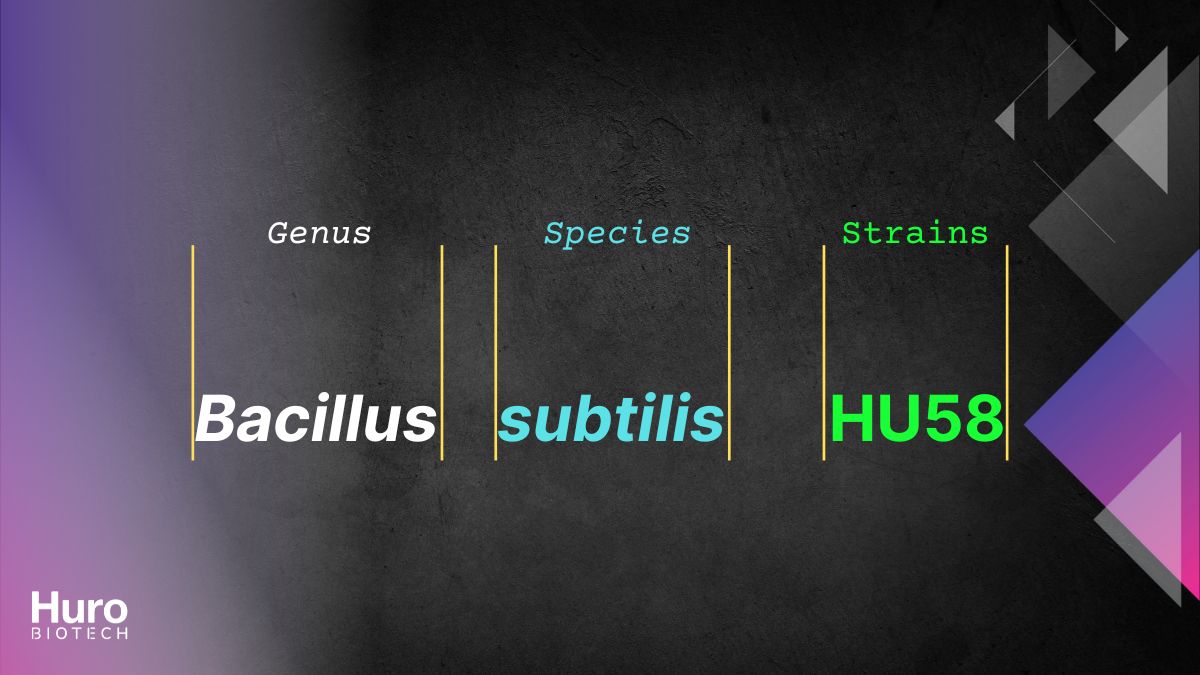
Types of Probiotics
Probiotics are beneficial bacteria and yeasts that support digestive health and overall well-being. They can be broadly categorized into Lactobacillus, Bifidobacterium, Saccharomyces, and Bacillus. Many probiotics are found in fermented foods like yogurt, kefir, and sauerkraut, or they can be taken as dietary supplements (NCCIH, n.d.). Here’s a detailed look at these types of probiotics:
Lactobacillus:
- A common genus found in yogurt and other fermented foods.
- Many species, including Lactobacillus acidophilus and Lactobacillus rhamnosus, are used as probiotics.
- Known for supporting digestive health and potentially helping with symptoms like diarrhea and lactose intolerance (Hill et al., 2014).
Bifidobacterium:
- Another common genus, often found in dairy products and the colon.
- Species like Bifidobacterium bifidum, Bifidobacterium longum, and Bifidobacterium lactis are frequently used.
- Associated with various health benefits, including supporting the immune system and alleviating IBS symptoms (O’Callaghan & van Sinderen, 2016).
Saccharomyces:
- A yeast-based genus, with Saccharomyces boulardii being the most prominent probiotic species.
- Found in supplements and used to prevent traveler’s diarrhea and support gut recovery after antibiotics.
- Known for its ability to maintain gut health during stress or infection (McFarland, 2010).
Bacillus:
- Includes spore-forming bacteria like Bacillus subtilis and Bacillus coagulans, which are highly resilient.
- Found in supplements and some fermented foods like natto.
- Valued for surviving harsh conditions, supporting gut microbial balance, and aiding digestion (Nawaz et al., 2024).
While these different types of probiotics offer diverse benefits, Huro Biotech specializes in Bacillus strains for their stability and efficacy in supplements.
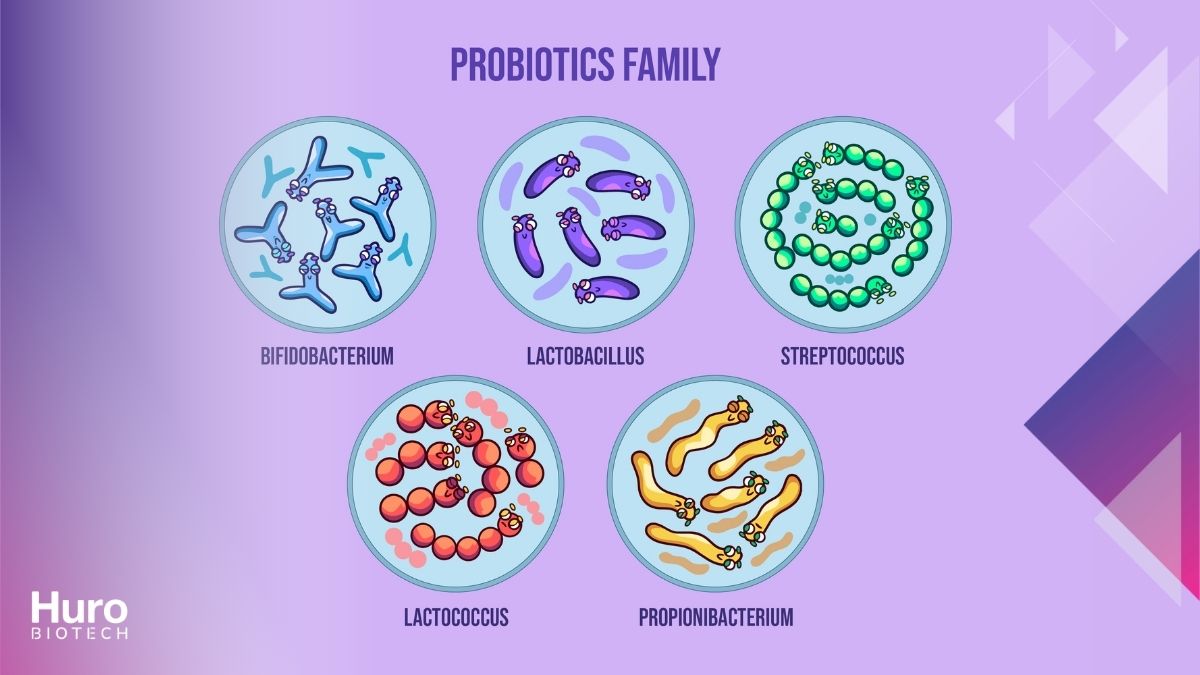
Probiotic Strains Explained
Each probiotic strain is a unique subtype with specific benefits. Below are the names of probiotics we’re highlighting:
- Bacillus subtilis HU58: Balances intestinal microbes, treats gastrointestinal disorders like constipation and diarrhea, generates natural enzymes, increases short-chain fatty acid (SCFA) production, and boosts vitamin B synthesis. Huro Biotech leverages its resilience in sporebiotic formulations.
- Bacillus indicus HU36: Inhibits harmful microorganisms, produces carotenoids with antioxidant activity, reduces inflammation and oxidative stress, decreases triglyceride and endotoxin absorption, and may reduce prostate cancer risk.
- Bacillus clausii: Inhibits harmful microorganisms, reduces inflammation and oxidative stress, supports digestive enzyme production, and aids post-antibiotic recovery.
- Bacillus coagulans: Inhibits harmful microorganisms, reduces inflammation and oxidative stress, supports vaginal health, and aids cholesterol management.
- Bacillus subtilis DSM 32444: Prevents upper respiratory tract infection symptoms, supports anti-inflammatory mechanisms, and activates innate immunity.
These probiotic strains are selected for their targeted benefits, reflecting Huro Biotech’s science-driven approach
Most Beneficial Probiotic Strains
The most beneficial probiotic strains include Bacillus subtilis HU58 and Bacillus coagulans, backed by robust research. A 2020 study showed they restore gut balance post-antibiotics, reducing dysbiosis in an M-SHIME® model (Majeed et al., 2020). Bacillus clausii excels in diarrhea prevention and immune support, with clinical trials in pediatric populations (Lopetuso et al., 2019). Bacillus indicus HU36 may offer antioxidant benefits, pending further human studies (Mailing, 2020). Bacillus subtilis DSM 32444 enhances gut barrier function in multi-strain formulas.
Probiotic Products and Formats
Probiotic Formats: Powders, Liquids, and More
Probiotics are available in various formats, each suited to different preferences and needs. Bacillus strains, due to their spore-forming nature, thrive in multiple delivery methods, ensuring viability. We develops innovative formats to make probiotics accessible. Here are the key options:
- Powdered probiotics: Highly versatile, powdered probiotics are shelf-stable and easy to mix into smoothies, water, or food. A 2022 review notes that Bacillus subtilis HU58 and Bacillus coagulans remain viable without refrigeration, delivering 1–5 billion CFUs. Ideal for travel or customized dosing.
- Liquid probiotics: Convenient for those who prefer not to swallow capsules or mix powders. Liquids often contain Bacillus clausii or Bacillus coagulans, which survive acidic environments. They’re popular for children or individuals with swallowing difficulties, though some require refrigeration to maintain potency.
- Capsules: A common format, capsules protect Bacillus indicus HU36 or Bacillus subtilis DSM 32444 from stomach acid, ensuring targeted gut delivery. They’re precise and convenient for daily use.
- Food-based Probiotics: Found in fermented foods like natto (Bacillus subtilis), these offer a dietary approach but may have lower CFU counts compared to supplements.
Huro Biotech’s powdered probiotics and emerging liquid formulations leverage strains like HU58 and HU36 for maximum efficacy and convenience. Always check labels for strain names and CFU counts to ensure quality.
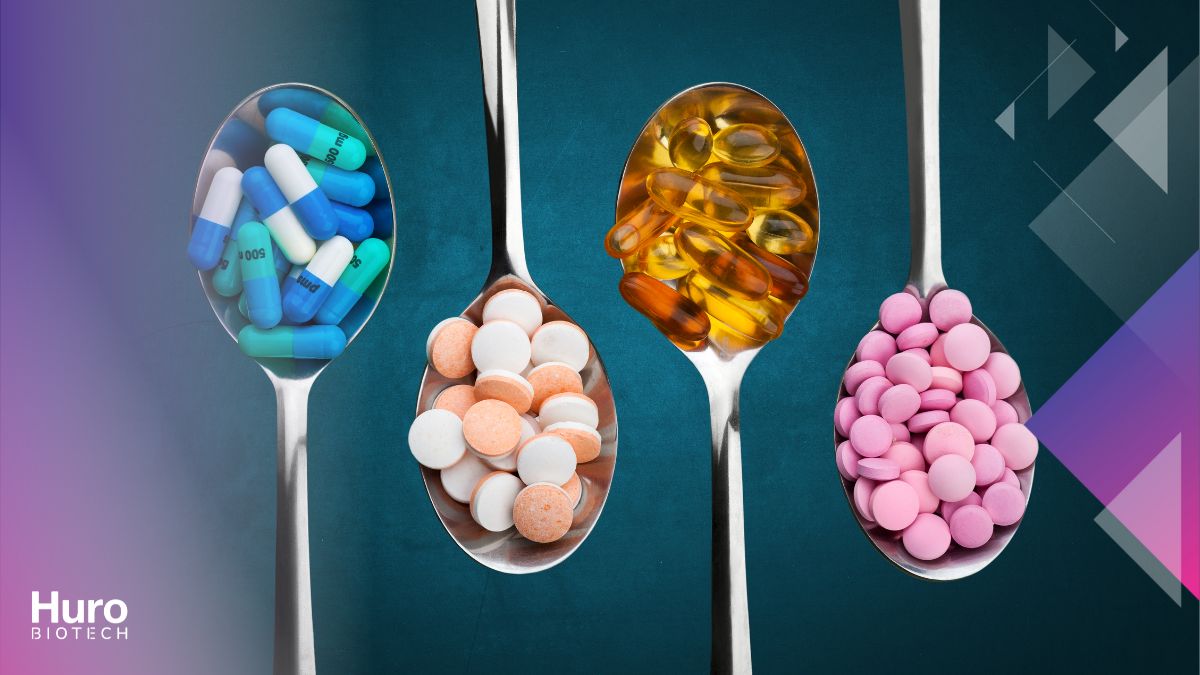
Practical Tips for Choosing and Using Probiotics
How to Choose the Right Probiotic
Firstly, select the right probiotic strain depends on your health goals:
- Antibiotic-related diarrhea: Bacillus clausii and Bacillus coagulans SC208 reduce diarrhea duration (Majeed et al., 2020).
- Gut health and immunity: Bacillus subtilis HU58 enhance microbial diversity and gut barrier function.
- Potential antioxidant support: Bacillus indicus HU36 may produce carotenoids, with ongoing research to confirm benefits.
Choose products with 1–5 billion CFUs and clear strain labeling (e.g., HU58, SC208). Huro Biotech ensures our sporebiotics meet strict safety standards, but consult a healthcare provider if immunocompromised or pregnant, as Bacillus strains may pose rare risks.
Tips for Incorporating Probiotics
Please incorporate these probiotic strains with these tips:
- Supplements: Take powdered probiotics, liquids, or capsules with meals to improve survival through stomach acid. Follow dosage instructions (typically 1–2 billion CFUs daily).
- Dietary sources: Bacillus strains are less common in foods but may be found in natto (Bacillus subtilis).
- Storage: Spore-forming Bacillus probiotics, especially powders and capsules, are often shelf-stable. Liquid probiotics may require refrigeration—check labels.
- Consistency: Use daily for weeks to see benefits, as effects build over time.
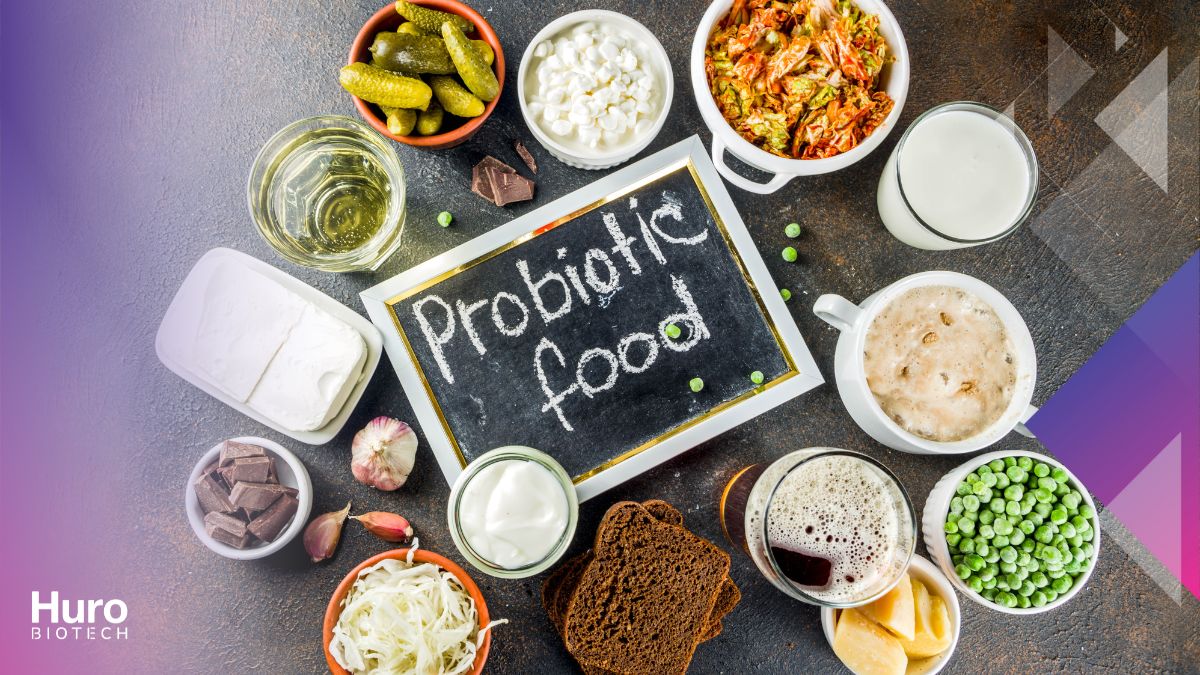
Key Takeaways
Probiotics offer science-backed benefits for gut health, immunity, and more. This guide has answered probiotic what does it mean, explored types of probiotics, and detailed the most beneficial probiotic strains. At Huro Biotech, we advance health through sporebiotics in formats like powdered probiotics and liquids, delivering sustainable solutions. Not all probiotics are the same—strain-specific choices matter.
-
Probiotics are live microorganisms that support gut health, immunity, and wellness when consumed in adequate amounts
-
Not are all probiotics the same—specific probiotic strains like Bacillus subtilis HU58 and Bacillus coagulans target unique benefits, such as diarrhea relief and gut microbial balance
-
Probiotics like Bacillus subtilis HU58, Bacillus indicus HU36, Bacillus clausii, Bacillus coagulans, and Bacillus subtilis DSM 32444 are among the most beneficial probiotic strains, offering resilience and diverse health benefits
-
Probiotics include but not limit to Lactobacillus, Bifidobacterium, Saccharomyces, and Bacillus, with Bacillus strains excelling in stability for supplements
-
Powdered probiotics, liquids, capsules, and food-based options like natto provide flexible ways to consume Bacillus strains
References
Hong, Y., Yang, H. S., Chang, H. C., & Kim, H. Y. (2022). Health-functional properties of Bacillus subtilis obtained from fermented Korean food as a probiotic candidate. Foods, 11(15), Article 2308. doi:10.3390/foods11152308
Ianiro, G., Rizzatti, G., Plomer, M., Lopetuso, L., Gasbarrini, A., & Cammarota, G. (2022). Bacillus clausii for the treatment of acute diarrhea in children: A systematic review and meta-analysis of randomized controlled trials. Microorganisms, 10(6), Article 1246. doi:10.3390/microorganisms10061246
Kolaček, S., Hojsak, I., Berni Canani, R., Guarino, A., Indrio, F., Orel, R., … Weizman, Z. (2017). Commercial probiotic products: A call for improved quality control. A position paper by the ESPGHAN Working Group for Probiotics and Prebiotics. Journal of Pediatric Gastroenterology and Nutrition, 65(1), 117–124. doi:10.1097/MPG.0000000000001603
Lopetuso, L. R., Graziani, C., Guarino, A., Lamborghini, A., Masi, S., & Stanghellini, V. (2019). Gelatin tannate and probiotic supplementation in the management of acute gastroenteritis in children: A systematic review. Beneficial Microbes, 10(7), 729–738. doi:10.3920/BM2018.0016
Mailing, L. (2020). The complete guide to soil-based probiotics. Retrieved from https://www.lucymailing.com/the-complete-guide-to-soil-based-probiotics/
Majeed, M., Nagabhushanam, K., Mundkur, L., & Paulose, S. (2020). Amelioration of Clostridium difficile-induced colitis in mice using a Bacillus coagulans GBI-30, 6086 and Bacillus subtilis formulation. Frontiers in Pharmacology, 11, Article 570092. doi:10.3389/fphar.2020.570092
National Center for Complementary and Integrative Health. (n.d.). Probiotics: Usefulness and safety. Retrieved from https://www.nccih.nih.gov/health/probiotics-usefulness-and-safety
Nawaz, S., Ashraf, A., Mustafa, T., Nawaz, H., Javaid, M. A., Ijaz, N., … Anjum, A. A. (2024). A comprehensive review of Bacillus subtilis as a potential probiotic: Benefits, mechanisms, and applications. Foods, 13(15), Article 2414. doi:10.3390/foods13152414
Synergia Life Sciences. (n.d.). Bacillus subtilis HU58. Retrieved from https://www.synergialifesciences.com




